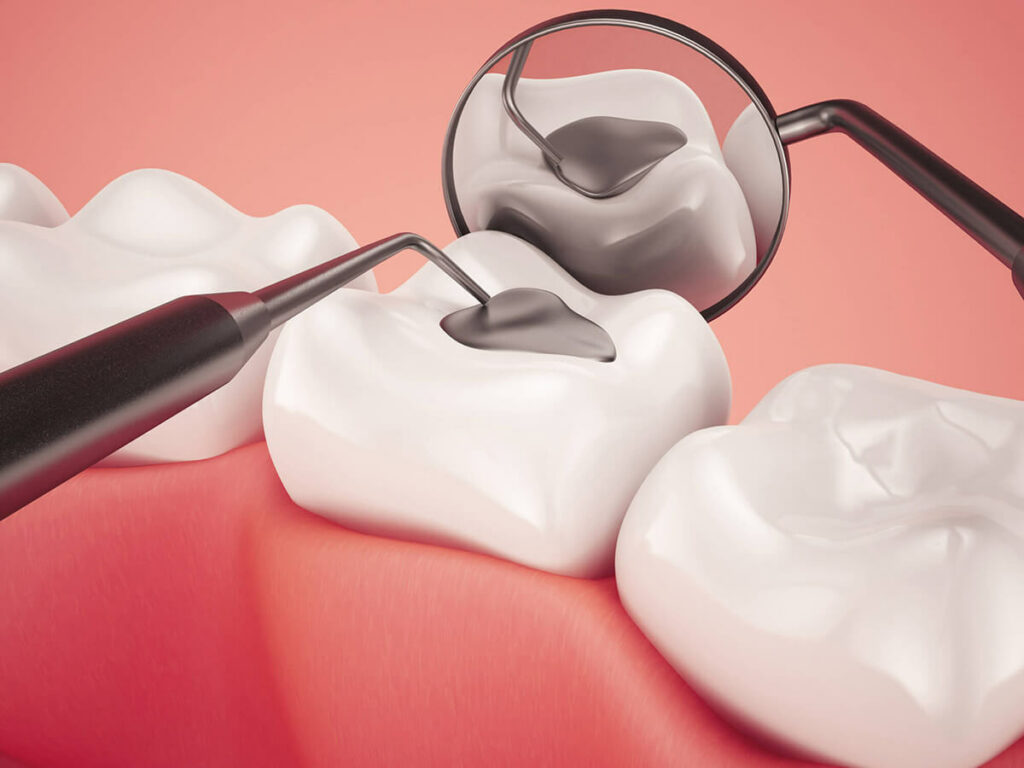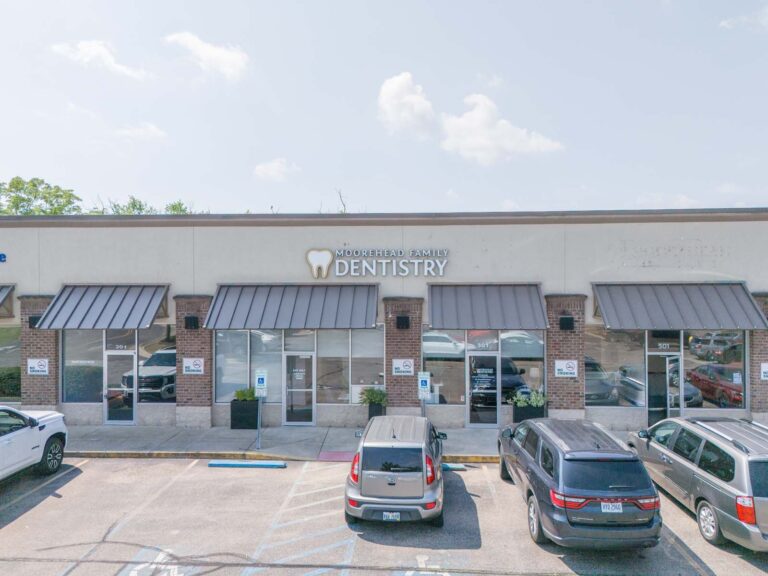Fillings and Sealants
Tooth decay and cavities are common dental issues. At Moorehead Dentistry we offer composite fillings to help prevent the problem from developing into something worse.
Protecting and Restoring Teeth with Fillings and Sealants
A dental filling is a simple, effective way to restore a tooth affected by a cavity or mild decay. Your dentist will remove the decayed area and fill the space with a durable material. We offer both composite (tooth-colored) and amalgam (silver) fillings, with composite being a popular choice for visible teeth due to their natural appearance.
Dental sealants are a thin, protective coating applied to the chewing surfaces of back teeth—areas that are more prone to cavities. Commonly used in children but also helpful for adults, sealants make it easier to keep these hard-to-clean areas free from bacteria and decay.
We proudly offer tooth fillings and sealants at all three Moorehead Dentistry locations in Blue Ash (Cincinnati), Batavia, and Lebanon, OH. Schedule your appointment today to protect and strengthen your smile.

-
How do cavity fillings work?
Cavity and tooth fillings are required because of the deterioration of holes left in the tooth due to tooth decay. Left unchecked, the decay will continue to spread and damage the tooth. During the filling procedure, dentists clean away the decay inside the cavity, usually with a drill to prevent further damage. But this doesn’t fix the damage that has already been created, so a filling is necessary. The intent of the filling is to replace the part of the tooth that is missing or destroyed by tooth decay. The dentist molds the filling to match the shape of the surrounding tooth, which restores the strength and integrity of the tooth and prevents further decay from happening.
-
How long does a dental sealant last?
Dental sealants have been used and proven to be effective since the 1970s. They are mainly placed on chewing surfaces and are effective in preventing tooth decay. Their lifespan can vary, but many last years—and it is possible to place a new sealant on a tooth if the sealant wears off. It is important to note that sealants only protect the surface of the tooth they are placed on. Using fluoride and other preventative cleaning practices will still help protect all the surfaces of the tooth from decay and cavities.
-
What types of filling materials are available?
There are several types of materials available that are used for fillings, which include gold, porcelain, silver amalgam (which consists of mercury mixed with silver, tin, zinc and copper), tooth-colored plastic and composite resin fillings. There is also a material that contains glass particles and is known as glass ionomer. This material is used in ways similar to the use of composite resin fillings. Which type is used depends on your dentist, the extent and location of your tooth decay, and sometimes, your insurance coverage.
-
How much does a tooth filling cost?
We aim to provide high-quality dental care that’s affordable for our patients at each of our locations in Cincinnati, Batavia, and Lebanon, Ohio. Out of pocket cost for any procedure depends on your insurance coverage at the time of the procedure.
Posterior Composite (White) Fillings: $205 – $390
- 1 surface: $205
- 2 surfaces: $262
- 3 surfaces: $323
- 4 surfaces: $390
Certain PPO plans may cover up to 80%
Anterior Composite (White) Fillings: $189 – $310
- 1 surface: $189
- 2 surfaces: $206
- 3 surfaces: $250
- 4 surfaces: $310
Certain PPO plans may cover up to 80%
See All Office Fees -
Should I have tooth sensitivity after a filling?
When you get a filling, the area around the infected tooth is numbed by your dentist. As a result, you likely won’t feel anything for an hour or two after your appointment but once the numbing wears off it is typical to feel pain in your teeth and gums.
Pain is common when drinking or eating anything that is hot or cold. It is also common when you brush or floss near the infected tooth. Tender gums are also typical after getting a cavity filled.
Minimize Tooth Sensitivity
You can reduce the sensitivity in your teeth and gums by:
- Taking an anti-inflammatory drug like Advil or Motrin
- Temporarily avoiding hot, cold, or acidic foods and beverages such as fruit, wine, and yogurt
- Brush and floss more gently
- Use a desensitizing toothpaste like Sensodyne or Colgate Sensitive
Your Comfort is Our Priority
We offer a variety of dental services to detect, diagnose, and treat dental issues while keeping your comfort a priority at all times. Learn more about our services or make an appointment with us today.



